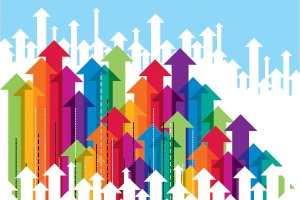 Today, I’m at the Barron’s Top Independent Advisors Summit, where I will be moderating a discussion titled “Fear and Greed” with two impressive panelists, Brian Wesbury and David Iben. I am very interested to hear what they have to say, and as moderator, I’ll be doing much more listening than speaking (no doubt to the benefit of the audience).
Today, I’m at the Barron’s Top Independent Advisors Summit, where I will be moderating a discussion titled “Fear and Greed” with two impressive panelists, Brian Wesbury and David Iben. I am very interested to hear what they have to say, and as moderator, I’ll be doing much more listening than speaking (no doubt to the benefit of the audience).
Before I put on my moderator hat, though, I'll share a few thoughts on the topic, focusing on one of Warren Buffett’s most famous maxims: “Be fearful when others are greedy, and greedy when others are fearful.”
At the end of the day, it's all about people
The first thing to note about Buffett’s quote is that it has nothing to say about the stock market or the economy. It’s all about people and how they feel, not about price/earnings ratios or economic growth rates. This might seem strange—how can you judge the markets without knowing about them? But, at their core, markets are nothing more than people. A stock price, after all, is the minimum price a seller (a person) will sell at and the highest price a buyer (also a person) will pay. Ultimately, every price is a set of personal decisions.
How those two people decide on those prices depends to a great degree on how they feel about the future. Yes, there are quantitative ways to set stock prices, but even those depend on a variety of assumptions that are based largely on how the analyst feels. If the analyst is scared and pessimistic, growth rates will be lower; if she’s excited and cheerful, growth rates will be higher.
Everyone tries to be objective, of course, but in the end, you have to make decisions, and those decisions reflect the way you feel. This is how analysis should work, on an individual level, with the analysts who make the most accurate projections getting the best results.
Optimism breeds optimism (and vice versa)
The problem is when expectations, good or bad, start to spread and reinforce each other. If everyone is optimistic, prices ratchet up, which makes everyone even more optimistic and rewards those who are most so. The cycle then repeats at a higher level of optimism, which is where we now find ourselves.
It can last until everyone has become greedy, at which point there's no one left to buy more and the upward move tops out. We see this regularly—for example, with technology stocks in 1999 and with housing in 2007. And the opposite happens as well, as we saw in 2000 and 2008. When prices top out, some lose their optimism and sell, driving prices down and pessimism up, and the process reverses.
Signs of a top include:
- Very high asset prices, like those we see now, with stock prices at their highest levels except for 1929 and 1999
- Large investments in money-losing ventures, like Webvan (1999), houses (2007), or Uber (now)
- A widespread sense that things are different this time, whether in the New Economy (1999), the housing market (2007), or management in Washington, DC (now)
In other words, looking around right now, I see a great deal more greed than fear. Optimism is spreading fast and running out of room to expand. One thing that has supported this market so far has been the high degree of fear accompanying the gains, but that seems to be passing. For the first time since the crisis, I see investors looking to increase their stock exposure. I see notable bears backing away from their stance. For the first time since 2007, I see greed showing up in a big way.
Does high optimism mean a market top is near?
Not necessarily. This kind of topping out takes time, often a year or more. Things might be different this time, justifying expectations. I do expect the market to keep rising for a while, so getting greedy might well pay off this year.
At the same time, though, as everyone gets more optimistic and more greedy, I am following Mr. Buffett’s advice and getting more fearful. The better things get, the more likely the market is to go down next rather than up. Now isn't necessarily the time to be fearful, but it certainly is the time to be thinking about what you'll do when that top eventually comes.


 Print
Print


